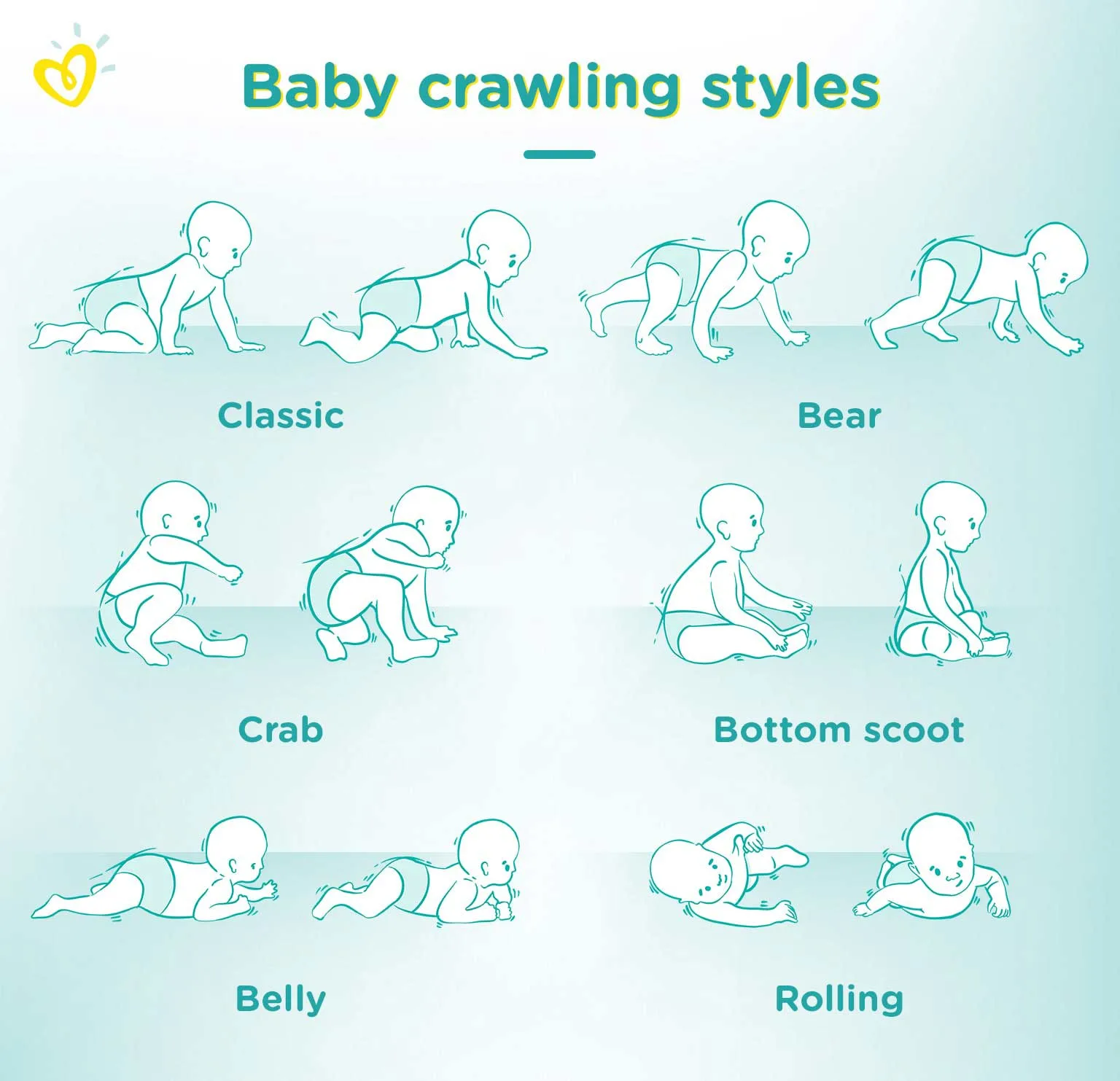When Do Babies Start Crawling?
Every day you watch your baby growing, learning, and becoming more independent. So it's natural to wonder when your little one will start to crawl. It turns out that there’s no definitive age when your baby will reach or attempt this movement milestone. But it's worthwhile to know about ways to encourage your little one's progress and to help teach your baby how to crawl.
Observing and helping your baby master this new skill is one of the joys of parenting you'll experience in this first year, and the moment your little one “gets it” is one you’ll remember for a long time.
Read on to learn how to spot the signs that your baby is preparing to crawl, at what age babies typically start to crawl, what different crawling styles there are, and what to do if your baby doesn’t crawl as expected.
At What Age Do Babies Crawl?
Many babies learn to crawl sometime between 7 months and 10 months. But as every baby is unique, your little one might be on the move earlier or later than others. Some babies skip the crawling stage altogether.
Keep in mind that all babies grow and develop at their own pace. Try not to compare your little one to other babies. If you’re wondering whether your baby is on track, consult with your healthcare provider.
Signs Your Baby Is Getting Ready to Crawl
Before your baby can begin crawling, she'll need to develop a complex set of skills, all of which will help strengthen her muscles in preparation for crawling.
These are some of the things you might notice your baby doing as she gets ready to start crawling:
Constantly moving while lying down
Arching her neck to look around when she's on her stomach (while you give her supervised tummy time)
Grabbing her feet while she’s lying on her back
Turning or flipping over when she’s lying on her back
Rocking on her hands and knees when she’s on all fours
Pushing herself backward instead of forward when she’s on all fours
Digging in with her knees and launching forward when she’s on all fours.
At this point in your baby’s development, crawling might not be too far off, so make sure you keep a watchful eye on her. Don’t leave her unattended unless she is in a safe place like her crib.
If you haven’t done so already, this is also a great time to babyproof your home. As part of this process, make sure that dangerous items are locked away and that furniture that can tip over is secure, so that your little one can’t get in harm’s way once she can move independently.
What Are the Different Types of Crawling?
You might be surprised to learn that there is not just one way to crawl—but many! Here are some of the most common crawling styles your baby might adopt:
Classic crawl. Your baby crawls on his hands and knees, moving one arm and the opposite knee forward simultaneously.
Bear crawl. Your baby walks on his hands and feet, keeping his elbows and knees straight.
Belly crawl. Your baby slithers around on his belly while moving forward.
Bottom scoot. Your baby moves forward using his arms while scooting on his bottom.
Crab crawl. Your baby moves either backward or sideways with the help of his hands.
Rolling crawl. Your baby moves around by rolling from one place to the next.
Your baby may use any one of these styles or even invent his own, so don’t be worried if his crawling doesn't look like any of those listed above.
How Can You Teach Your Baby to Crawl?
Babies are eager to move and explore, and they essentially teach themselves to get where they want to go. To encourage your baby to start crawling, try these ideas:
Place one of your baby’s favorite objects or toys just out of reach in front of her when she’s on the floor to inspire her to start crawling toward it.
Set up an obstacle course for her with pillows, boxes, and other safe objects to help her practice and develop her abilities.
Encourage your baby to crawl toward one of her favorite objects by showing her that you’ve hidden it behind a pillow a little distance from where she is on the floor.
The aim of these exercises is to get your baby to be excited about learning to crawl and see it as a new adventure. If you feel she’s starting to lose interest or is getting frustrated, it's time to stop and do something else.
Always supervise your baby when she’s playing on the floor and when she's on her tummy.
What If Your Baby Doesn’t Crawl as Expected?
Just like every other baby, your little one is developing at his own pace and on his own timeline. Try not to think in terms of “my baby should have started to crawl by now.” Also, remember that your baby might not crawl exactly how you expect him to. Instead, he may use another way to get around, such as bottom scooting or belly crawling. Or he may skip crawling altogether.
Usually, there’s no cause for concern as long as your baby is learning how to coordinate his arms and legs. His eventual goal is to learn how to walk, so try not to focus on how he’s crawling in the meantime.
Of course, if you feel your baby is not moving properly, is unable to coordinate each side of his body, or is not using each arm and leg equally, talk to your healthcare provider. And reach out to your provider any time you have questions or concerns about your baby's development in general.
FREQUENTLY ASKED QUESTIONS
At around 8 months, many babies can sit up without support. However, all babies are different, so your little one might sit up unaided a little earlier or later.
Crawling lets your baby see and explore his world in a new and different way, and he’ll love his expanded freedom and mobility. In time, he’ll be ready for more and want to join in with everyone else who is walking. Enjoy this special time. Crawling is a new adventure for your baby, and in its own way your baby moving independently is a new adventure for you as a parent, too.
To start earning points for all those diaper purchases, download the Pampers Club app today.
How we wrote this article
The information in this article is based on the expert advice found in trusted medical and government sources, such as the American Academy of Pediatrics and the American College of Obstetricians and Gynecologists.
The content on this page should not replace professional medical advice. Always consult medical professionals for full diagnosis and treatment.
Join Pampers Club and get:





